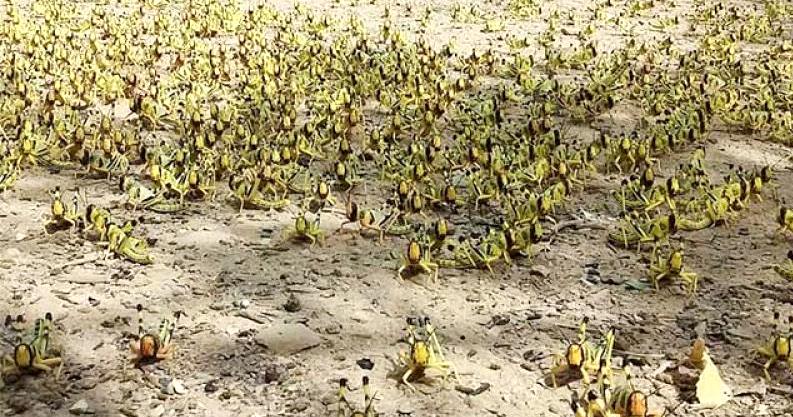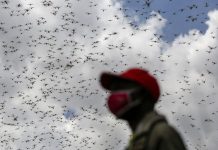TANZANIA Meteorological Authority (TMA) has allayed fears circulating in social media on the possibility of an invasion of desert locust swarms in the country which have already threatened food security in neighbouring countries.
The agency says that there is a very low possibility for Tanzania to be struck by the locusts as winds are blowing northwards and not southwards, as the insects move with the wind direction.
TMA Director General (DG) Dr Agnes Kijazi said yesterday that the Inter Tropical Convergence Zone (ITZ) earlier had some indications for the winds to blow southwards of the hemisphere, a condition which would have caused locust swarms to fly into the country.
“But it has now changed its direction to the north, a move which relieves fear of the food production,” said the TMA boss.
Dr Kijazi who used the avenue to announce weather forecasts in relation to expected seasonal rainfalls, said that there was expected average rainfall beginning the second week of March, but the wind was not expected to blow above average and it was not forecast to blow southwards, which would have led locusts towards Tanzania.
“Swarms of locust movements and direction depend on the winds force direction and hot weather condition. However, TMA will remain alert and issue proper information for the relevant authorities to take appropriate action in case there are changes of wind direction which may be of any threat by the crop destructive insects’ invasion,” she added.
TMA’s clarification comes barely five days after Ministry of Agriculture issued a statement on its website that there was no invasion of the food threatening locusts in the country so far, which have already destroyed food crops in neighbouring Kenya and posing a potential threats to Uganda and Southern Sudan where they are reported to have headed a few days ago.
“There are no scientific reports confirming the presence of locusts in Kilimanjaro and Arusha regions, even though, the same have been reported in Kenya’s Kajiado County, only 50 kilometres from Namanga border,” a statement on the agriculture ministry’s website reads in part.
The statement, however, calls for agricultural extension officers and other stakeholders in the country to inform relevant government bodies in case of any signs of locust invasion in their respective areas.
“The ministry of agriculture is working closely with international organisations, including FAO (UN’s Food and Agricultural Organisational), to combat any possible invasion of locust swarms in Kilimanjaro, Manyara and Arusha regions. Three donated aircrafts are on standby for spraying pesticides to control any outbreak,” the statement reads further.
UN Under-SecretaryGeneral for Humanitarian Affairs Mark Lowcock on Monday said that a region where 12 million people already face severe food insecurity cannot afford another jolt.
Stating that he had recently released $10 million in emergency funds for the disaster, the UN official warned “if a rapid response” does not occur, the international community will face a huge problem later in the year.
The UN has sought $76 million in immediate aid. So far just under $20 million has been received.
The infestation in Kenya is the worst in 70 years, while Somalia and Ethiopia are experiencing their worst outbreaks in 25 years, putting crop production, food security and millions of lives at risk.







